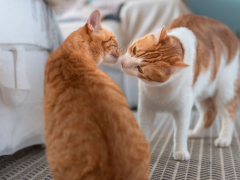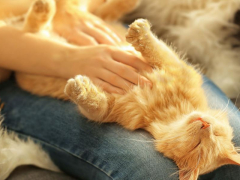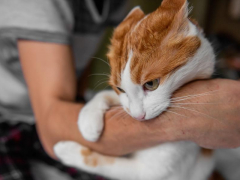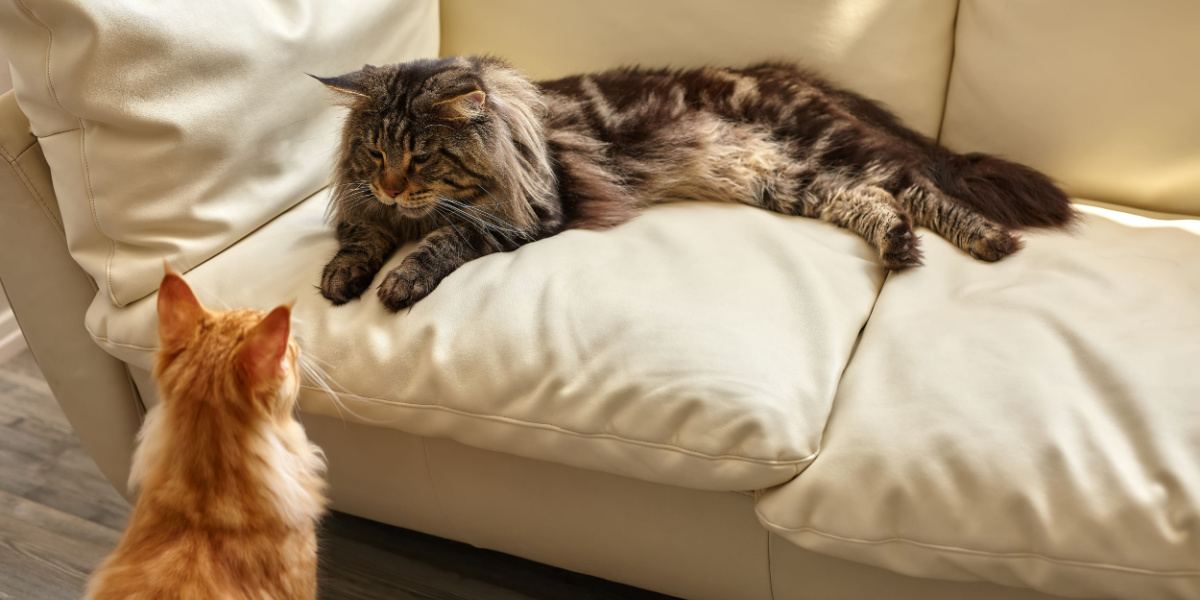
There’s nothing more tempting then to get a new feline companion for your family. But how does this affect your resident cat(s)? Introducing cats is possible but it can be tricky and there are many pitfalls to avoid.
There are some serious warning signs to watch out for when introducing cats that can avoid a disaster. A slow positive introduction will go a long way to encouraging a happy friendship between your cats long term.
How To Properly Introduce Cats
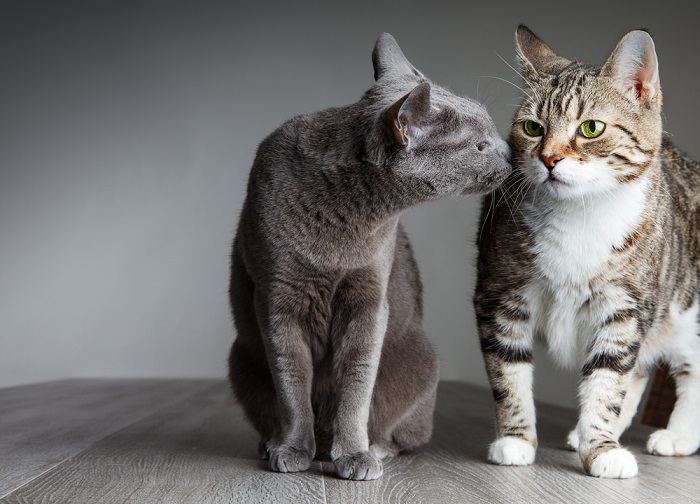
Cats are highly territorial, so introducing a new pet can be difficult
So you’ve just brought your new cat or new kitten home and you’re going to introduce it to your resident cat(s) right? Wrong! This may be the worst thing to do. Cats are territorial pets and in the wild, they are often solitary animals and live alone.
They’re not naturally friendly to other unknown cats so the introduction process needs to be slow. It’s possible for your cats to get along and even be best friends but they need proper introductions to do so. Any negative introduction could impact their relationship long term.
Before starting to introduce your feline friends, ensure that all cats are neutered. Un-neutered cats are more threatening to other cats so this is essential to encourage a smooth introduction. Bring your new cat to the vet to make sure they’re healthy and not carrying any diseases that could pass to your other cat(s).
We don’t advise to introduce your cats for days, even weeks and it would be best to keep your new cat in a separate room. This allows them time to get used to each other being in the house without having to physically interact.
During this time we’d encourage scent swapping. This is essentially swapping their smells so they can get used to each other. You can do this by rubbing a cloth against the side of one cats face and then rubbing it against the new cat.
All cats should have enough resources. Resources include litter boxes (1 per cat plus 1 extra), beds, hiding areas, scratching posts, water bowls, food bowls and toys. Plugging in a synthetic pheromone can also help reduce stress levels and encourage cats to get along.
Initially, start to introduce your cats through a glass door/tall baby gate/crack of a door. This way they can see each other but not cause any harm. If signs are positive (relaxed, no hissing or growling, no attempt to swat or slap each other) you can allow them to meet for the first time and interact for short periods of time under supervision.
Eventually this time increases and you can leave them alone once you’re happy that they get along and won’t fight.
I wouldn’t advise to feed them together during the initial introduction period as this may stress them out and cause more tension. However, you can use treats to reward positive behavior towards each other and build a positive association.
Also Read: How To Introduce A New Kitten To An Older Cat
Serious Warning Signs When Introducing Cats
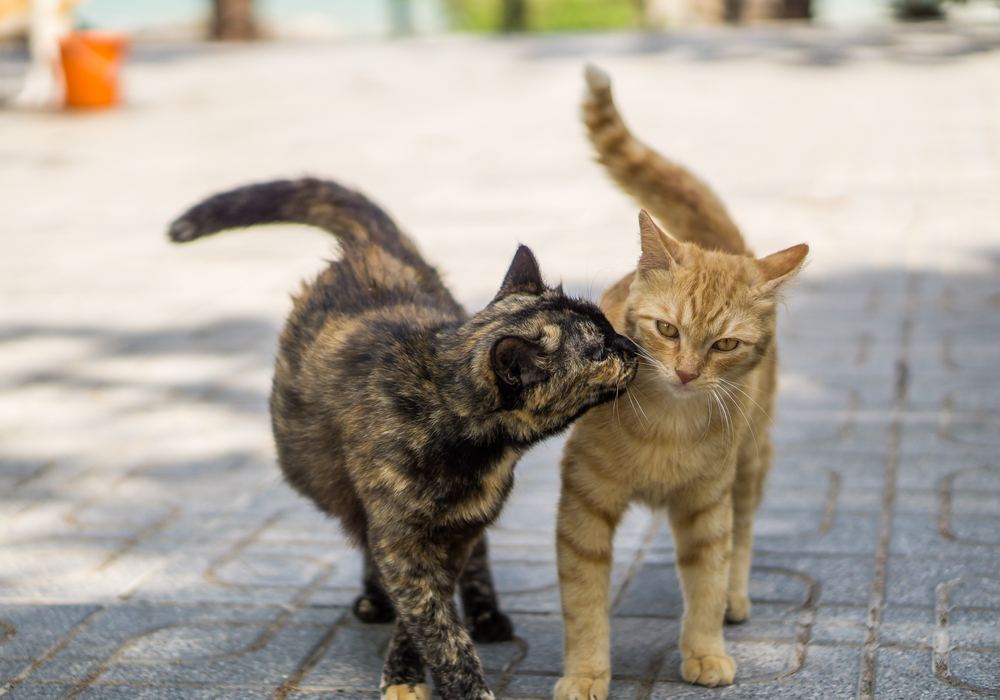
Cats may show defensive or threatening behaviors when they meet a new cat
Sometimes even with the best introductions, there are still signs of aggression and hostility. This also depends on your current cat’s personality and the new kitty’s personality. If there are signs of aggression, it’s best to cut the interaction short to avoid any negative interactions from happening.
This can impact their relationship in the long term and make the introductions turn sour so it’s best to be avoided. There are some common warning signs to watch out for when introducing cats. This will allow you to separate them quickly when you notice these warning signs.
Warning signs to watch out for include;
1. Dilated Pupils
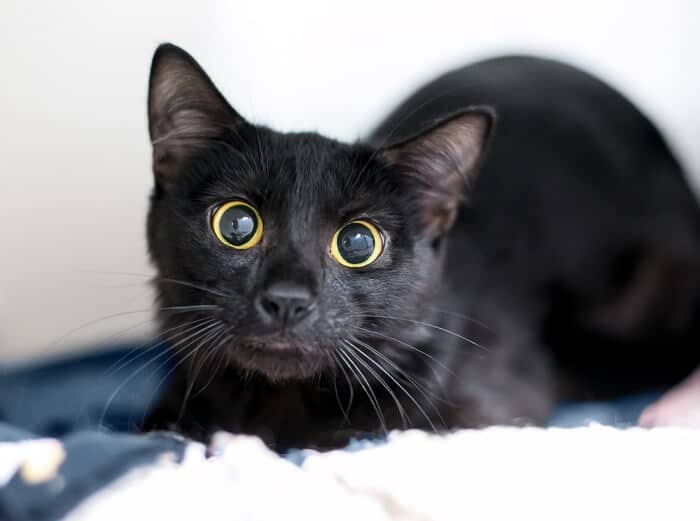
Dilated pupils can be a sign of excitement, fear or over-stimulation
If you notice that one of the cats has dilated pupils it’s a sign to watch out for. It means that they may be over stimulated, fearful, anxious or in rare cases aggressive. Either way, it’s a sign that your kitty is starting to feel a bit scared and it could be too much for them.
Their eyes may dilate in any new situation but keep an eye on their body language and vocalizations and separate them if you’re concerned.
Also Read: Are My Cats Playing Or Fighting?
2. Tail Swishing
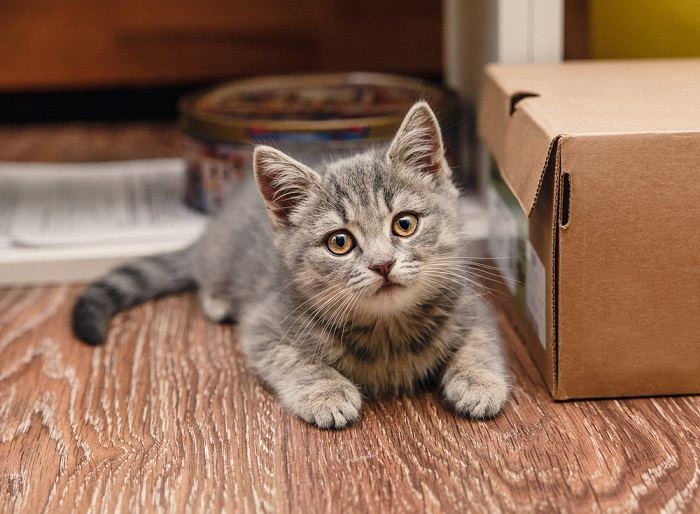
A cat’s tail position can give valuable insights into their mood
I think we’ve all seen a cat that swishes their tail from side to side. This can happen for a few reasons but may indicate that your cat is focusing on the situation, starting to feel unhappy or a bit annoyed. If you see fast tail swishing from side to side, it’s better to stop the interaction at that as your cat clearly wants some space.
Also Read: What Your Cat’s Tail Can Tell You
3. Staring
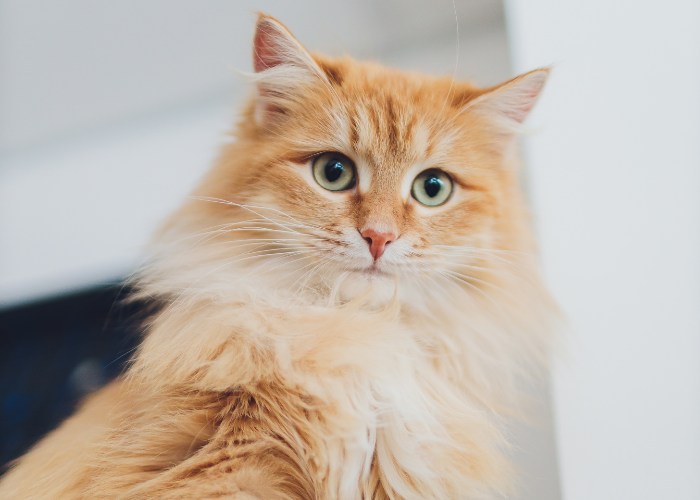
Fixed eye contact between cats can be a precursor to aggression
Although it may seem like a harmless sign, two cats staring at one another without breaking eye contact is a sign for concern. Cats prefer to use body language to communicate before they physically fight and a staring contest is one of the first steps. They stare until the less dominate cat looks away and ‘surrenders’. It’s a sign that the interaction is going negatively and should be stopped.
Also Read: Why Is My Cat Staring At Me? Top 5 Reasons Explained
4. Hissing
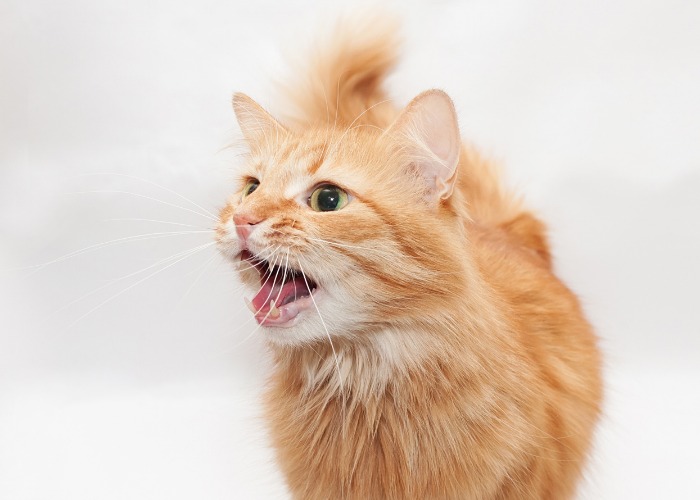
Hissing is a negative vocalization in cats, performed when fearful, stressed or aggressive
Cats hiss when they’re scared and fearful so if you hear hissing during the interaction, it means that one of the cats is feeling a bit threatened and scared. One or two short hisses are expected initially but anything more than this means that one of the cats is feeling quite scared and you should cut the interaction short.
Also Read: When Will My Cat Stop Hissing at the New Kitten?
5. Growling
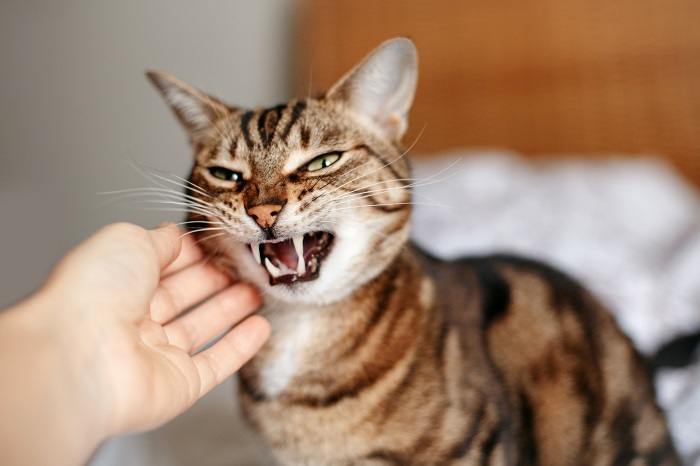
Growling is another negative vocalization in cats, and should be taken as a warning
Growling sounds like a low rumbling sound and is sign that your cat may be feeling threatened. These sounds are a warning sign that the interaction could become aggressive and that the cat wants to be left alone. Separate the cats immediately.
Also Read: How To Tell If A Cat Is Angry
6. Flattened Ears

Cats use their ear position as a form of visual communication
Apart from vocalizations, we can tell a lot from body language particularly ear position. Signs of a relaxed and curious cat are ears that are pointing upwards or slightly forwards. Ears that are pointed backwards or or flattening against their head are signs of extreme fear and even aggression. It’s a warning sign to stop the interaction immediately.
Also Read: Why Do Cats Put Their Ears Back?
7. Puffed Out Hair
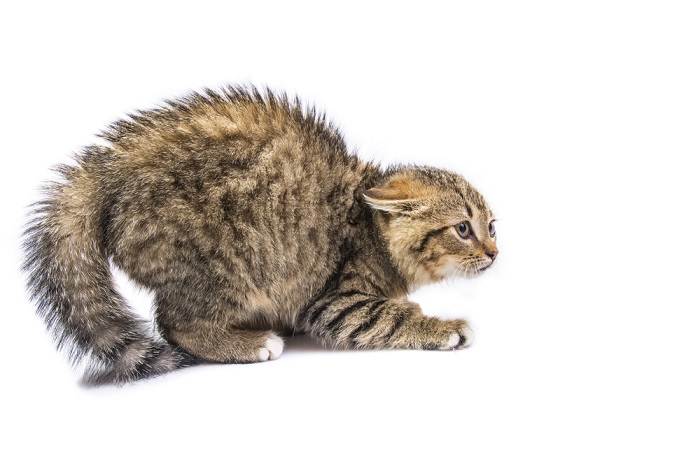
Piloerection is an obvious sign that a cat is unhappy, stressed or fearful
You may notice one of the cat’s hairs becomes puffed out along their body and tail. They may also arch their back. This is called piloerection and it’s basically the cat trying to make themselves look larger and more intimidating. This is a serious sign that the cat feels threatened and it could result in aggression. Stop the interaction immediately.
Also Read: Why Do Cat Tails Shake Or Quiver?
8. Hiding
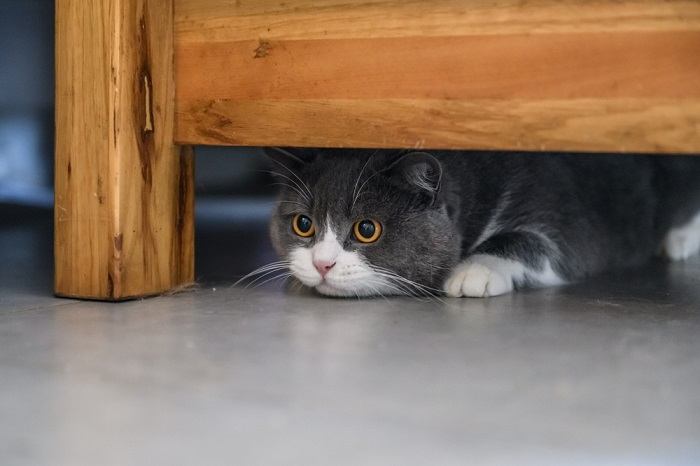
Cats may hide away when scared or stressed, and should be provided with safe hiding spaces
If one of the cats is trying to run away and find somewhere to hide, it means that they’re super scared and don’t want to be in the situation. This usually occurs in the less dominant cat. To avoid extreme fear, stop the interaction and allow the cats to have a break.
Also Read: How to Get Cats To Like Each Other In 10 Simple Steps
9. Loud Vocalizations
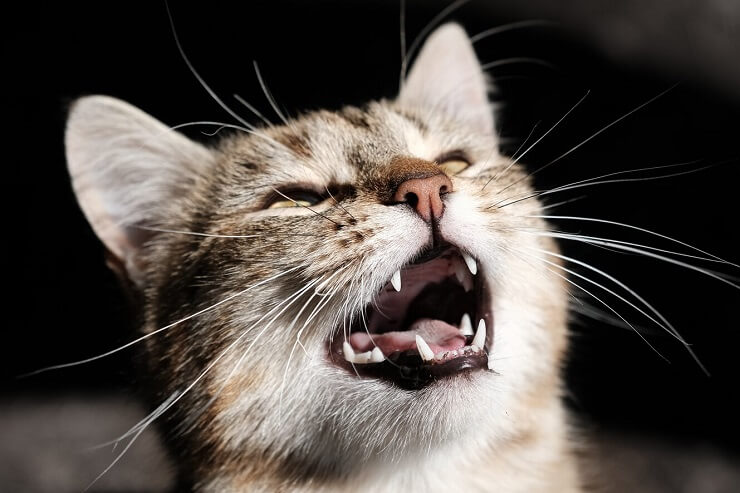
Cats are often fairly quiet creatures, and loud vocalizations are a sure sign of trouble
Vocalizations include hissing and growling which we’ve talked about. Louder vocalizations include howling, yowling, snarling or caterwauling. This is a step up from hissing and growling and means that situation could quickly escalate to aggressive behavior. Separate the cats immediately and give them some space.
Also Read: What Does It Mean When A Cat Is Screaming?
10. Attempts To Swat/Slap/Bite
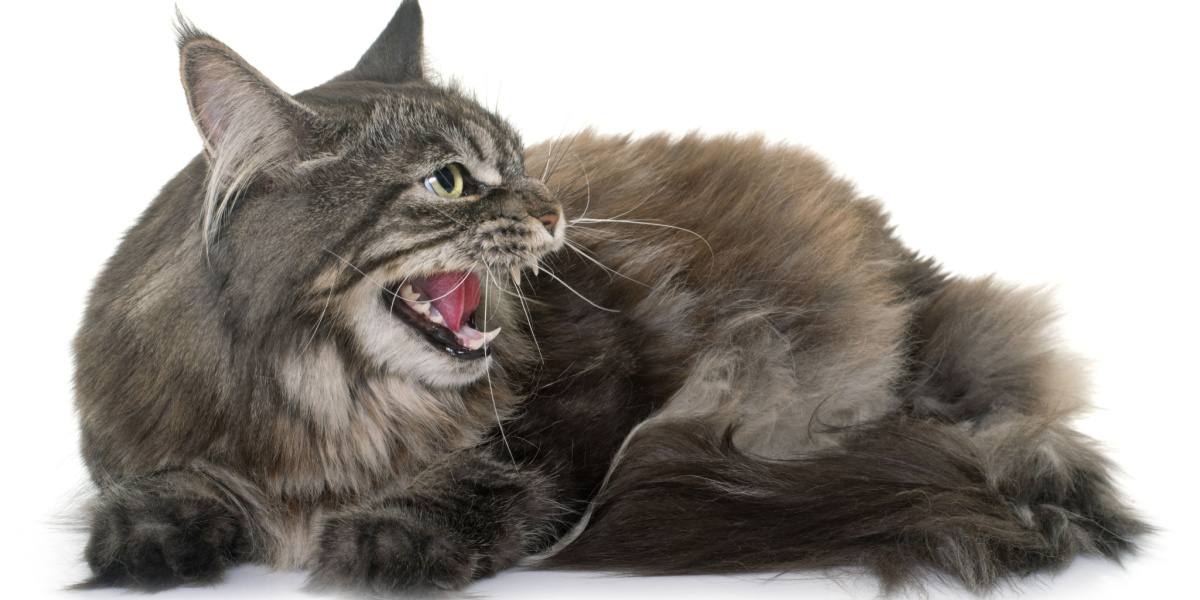
Cats use physical confrontation as a last resort, but this can quickly turn vicious
So far we’ve mostly discussed body language and vocalizations as warning signs but signs can be physical too. Any physical signs of aggression such as attempting to bite or fight by swatting with paws should be stopped immediately.
Apart from causing physical damage to each other, it’s also a very negative interaction and could cause a lot of emotional damage to both cats. Many people think that it’s a good idea to “let them fight it out” but it really isn’t. If you want your cats to have a positive relationship in the future, don’t allow them to fight.
Also Read: How To Train Your Cat Not To Bite
A Word Of Warning
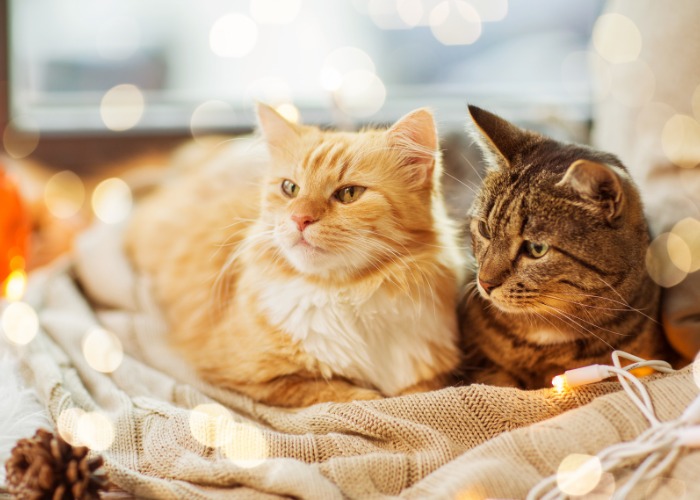
Cats can form social bonds with other cats, but this is not guaranteed
A slow positive introduction is essential when introducing cats. Don’t try to skip any steps! You may be thinking that your cats got along very fast when you introduced them in the past and sometimes this is the case. But in other cases rushing an introduction between cats can result in the cats not having a good relationship which can be a disaster in any household.
Even when the best introductions are done, some cats still don’t get along. This could be due to their nature, personality or early social experiences. Some cats are more open to cat relationships than others. In most cases we hope that cats tolerate each other without any negative interactions, and if they become friends that’s a bonus.
Signs that your cats aren’t getting along include signs of aggression towards each other in the house, stress in one or all cats, not using their litter boxes, reduced appetites, chronic health issues and the list goes on. Inter-cat conflict needs be addressed quickly and seek advice from your veterinarian or a cat behaviorist in this case.
Also Read: How To Help Cats Get Along?
Conclusion
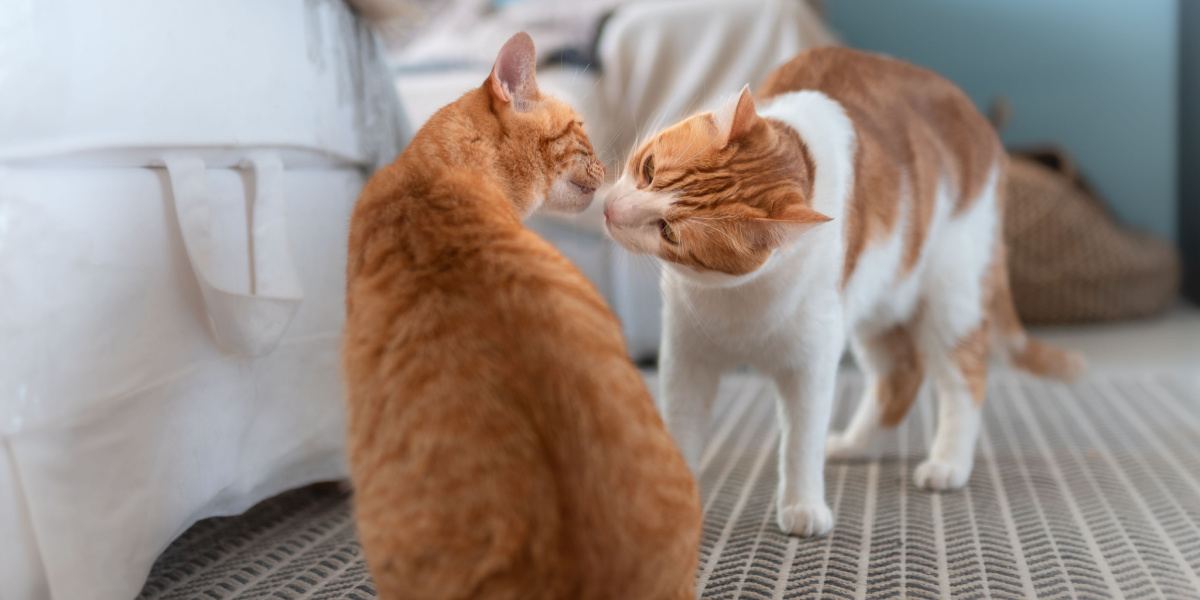
Slow and positive introductions are important to avoid inter-cat aggression
Introducing cats is a tricky business but if done properly, it can result in a positive happy friendship between your cats. Introductions should be slow and include scent swapping, providing plenty of resources and using synthetic pheromone diffusers. There are some serious warning signs when introducing cats that shouldn’t be ignored.
Cats should be separated if showing any signs of aggression to prevent any negative interaction. Despite our best efforts as pet owners, some cats won’t get along and in this case you should seek advice from your vet or cat behaviorist.
